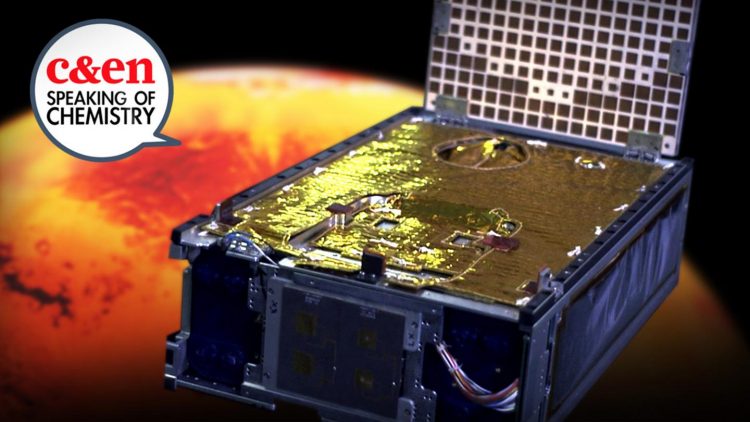These tiny satellites could take on NASA's riskiest missions

At the Jet Propulsion Lab in Pasadena, California, NASA is preparing tiny satellites the size of briefcases for a mission to Mars. Matt Davenport and JPL Chief Engineer for Interplanetary Small Spacecraft Andrew Klesh geek out on CubeSats in the latest Speaking of Chemistry episode. Watch the video here: https://youtu.be/OGmiv53La0o. Credit: The American Chemical Society
Called CubeSats, swarms of these small marvels could potentially take on NASA's riskiest missions — think exploring the surface of Venus or the volcanoes of Io — at a lower cost than full-size, multi-instrument satellites.
Matt Davenport and JPL Chief Engineer for Interplanetary Small Spacecraft Andrew Klesh geek out on CubeSats in the latest Speaking of Chemistry episode. Watch the video here: https:/
###
Speaking of Chemistry is a production of Chemical & Engineering News, a weekly magazine of the American Chemical Society. It's the series that keeps you up to date with the important and fascinating chemistry shaping the world around you. Subscribe to the series at http://bit.
The American Chemical Society is a nonprofit organization chartered by the U.S. Congress. With nearly 157,000 members, ACS is the world's largest scientific society and a global leader in providing access to chemistry-related research through its multiple databases, peer-reviewed journals and scientific conferences. Its main offices are in Washington, D.C., and Columbus, Ohio.
To automatically receive news releases from the American Chemical Society, contact newsroom@acs.org“>newsroom@acs.org.
Media Contact
All latest news from the category: Physics and Astronomy
This area deals with the fundamental laws and building blocks of nature and how they interact, the properties and the behavior of matter, and research into space and time and their structures.
innovations-report provides in-depth reports and articles on subjects such as astrophysics, laser technologies, nuclear, quantum, particle and solid-state physics, nanotechnologies, planetary research and findings (Mars, Venus) and developments related to the Hubble Telescope.
Newest articles

A universal framework for spatial biology
SpatialData is a freely accessible tool to unify and integrate data from different omics technologies accounting for spatial information, which can provide holistic insights into health and disease. Biological processes…

How complex biological processes arise
A $20 million grant from the U.S. National Science Foundation (NSF) will support the establishment and operation of the National Synthesis Center for Emergence in the Molecular and Cellular Sciences (NCEMS) at…

Airborne single-photon lidar system achieves high-resolution 3D imaging
Compact, low-power system opens doors for photon-efficient drone and satellite-based environmental monitoring and mapping. Researchers have developed a compact and lightweight single-photon airborne lidar system that can acquire high-resolution 3D…





















